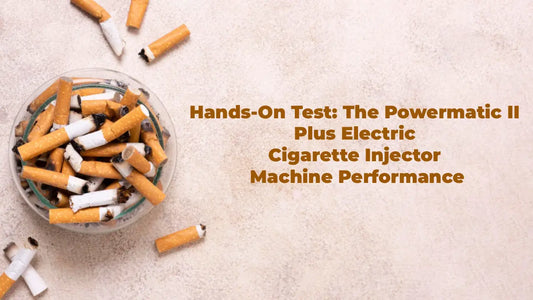
Vintage Lighters: The Ultimate Collector’s Guide
Share
Vintage Lighters: The Ultimate Collector’s Guide
Vintage lighters are more than just tools for creating fire—they are timeless collectibles that showcase exquisite craftsmanship, rich history, and iconic design. From the classic petrol lighters of the early 1900s to the rugged and reliable WWII Zippos, these pocket-sized treasures captivate collectors and enthusiasts worldwide.
In this definitive guide, discover everything you need to know about vintage lighters: their fascinating history, renowned brands, how to authenticate genuine pieces, expert collecting tips, and advice on restoration and maintenance. Whether you’re a seasoned collector or just beginning your journey, this guide will help you build and cherish your vintage lighter collection.
1. The History of Vintage Lighters
The evolution of lighters reflects advancements in technology and changing styles throughout history.
Early Innovations (1800s – Early 1900s)
- The earliest lighters evolved from modified flintlock pistols in the 19th century.
- By the late 1800s, specialized lighters using naphtha or petrol fuel were crafted, often as luxurious silver or brass pieces.
- These early models were prized for their ornate design and exclusivity.
The Golden Era (1920s – 1950s)
- Mass production and innovation flourished between the World Wars.
- Brands like Ronson and Dunhill introduced automatic ignition lighters, simplifying use with a single flick.
- Zippo lighters became iconic during WWII for their windproof design and durability, favored by soldiers worldwide.
Postwar and Modern Collectibles (1960s – 1980s)
- The postwar years saw novelty and advertising lighters gain popularity.
- Manufacturers experimented with unique shapes, materials, and multifunctional gadgets.
- While disposable lighters emerged in the 1980s, collectible vintage models maintained strong appeal.
2. Top Vintage Lighter Brands to Know
Certain brands have become synonymous with quality, style, and collectibility in the vintage lighter world.
Zippo (USA)
- Founded in 1932, Zippo is renowned for its windproof design and lifetime guarantee.
- Collectors seek rare military editions, special finishes, and limited-run engravings.
Ronson (UK/USA)
- Established in 1897, Ronson created the first automatic lighter.
- Popular models include Varaflame, Standard, and Whirlwind, noted for their sleek Art Deco style.
Dunhill (UK)
- A luxury brand famous for sophisticated gold, silver, and lacquer lighters.
- Highly sought after by collectors and celebrities alike.
IMCO (Austria)
- Known for affordable, durable lighters such as the Triplex and Junior.
- Valued by collectors for their reliability and military history.
Other Notable Brands
- S.T. Dupont (luxury French lighters), Colibri (butane innovations), Evans, Thorens, and Cartier.
3. Types of Vintage Lighters Explained
Understanding the different types of vintage lighters helps collectors make informed choices.
- Petrol (Wick) Lighters – The earliest design using liquid fuel and a cotton wick.
- Flint Wheel Lighters – Featuring a spark wheel to ignite fuel reliably.
- Table Lighters – Larger, decorative lighters often displayed in homes or bars.
- Novelty Lighters – Fun shapes and designs, such as animals, cars, and gadgets.
- Butane Lighters – Cleaner-burning, introduced mid-20th century with modern fuel.
4. Why Collect Vintage Lighters?
Collecting vintage lighters offers numerous rewards beyond simple hobby enjoyment.
- Historical Significance: Each lighter tells a story of its era.
- Artistic Craftsmanship: Intricate designs and quality materials make them miniature works of art.
- Investment Opportunity: Rare and well-preserved models often appreciate in value.
- Unique Conversation Pieces: A collection reflects personal taste and history.
5. How to Authenticate Vintage Lighters
Ensuring authenticity is key for collectors to avoid reproductions and fakes.
- Check Brand Markings: Look for date codes and logos, especially on Zippo bottoms.
- Assess Craftsmanship: Genuine vintage lighters often feature hand-engraving and heavier weight.
- Look for Natural Wear: Authentic aging is preferable to artificial distressing.
- Verify Fuel Type: Older lighters use petrol; newer models may use butane.
6. Beginner’s Guide to Collecting Vintage Lighters
Starting your collection is easier with these expert tips.
- Focus Your Collection: Choose a brand, era, or style to specialize in.
- Educate Yourself: Learn to interpret date codes and production markings.
- Prioritize Condition: Mint or near-mint condition lighters have higher value.
- Buy from Trusted Sources: Use reputable dealers, auctions, and verified online sellers.
- Join Communities: Engage with forums, clubs, and social media groups.
7. Caring for and Restoring Vintage Lighters
Proper care preserves your lighter’s beauty and functionality.
- Gentle Cleaning: Use soft cloths and avoid abrasive materials.
- Use Correct Fuel: Only use recommended lighter fluid for petrol models.
- Replace Wicks and Flints: Regular maintenance keeps lighters operational.
- Store Properly: Keep in dry, cool places to prevent rust and damage.
- Professional Restoration: Seek experts for delicate or valuable pieces.
8. Common Pitfalls to Avoid
Avoid mistakes that can diminish your collection’s value.
- Over-polishing, which can strip original finishes.
- Using incorrect fuel, potentially damaging mechanisms.
- Neglecting authenticity verification.
- Purchasing based solely on appearance without research.
9. Investing in Vintage Lighters
Some vintage lighters command high prices and can be sound investments.
- Dunhill gold-plated models may exceed $2,000.
- Early Zippo military editions often sell between $500 and $1,000.
- Unique novelty designs can attract premium prices.
While not all models appreciate dramatically, many hold or increase their value over time.
10. Where to Buy and Sell Vintage Lighters
Finding and selling vintage lighters requires knowing the right venues.
- Antique shops and flea markets.
- Online marketplaces like eBay and Etsy (check seller ratings).
- Specialist auctions such as Christie’s and Bonhams.
-
Collector shows, conventions, and online forums.
11. Spotlight on Famous Vintage Lighter Collections
Some collectors have amassed extraordinary archives.
- Museums dedicated to smoking accessories showcase rare and historic pieces.
- Private collections may include thousands of unique lighters.
- Online galleries feature jewel-encrusted Duponts and quirky IMCO novelties.
12. The Future of Vintage Lighter Collecting
As smoking declines, vintage lighters have transitioned from practical tools to collectible art.
Younger generations appreciate their retro style and historical significance, ensuring the hobby’s enduring appeal.
Additional Insights on Vintage Lighters
Branding and Markings
Brand logos, serial numbers, and production codes serve as vital logs of a lighter’s origin and age. Learning to read these markings enhances authentication and valuation.
Building a Cohesive Collection
Specializing by brand, era, or lighter type helps create meaningful collections that tell a story and maintain value over time.
The Role of Time in Value
Age, rarity, and condition all influence a vintage lighter’s worth. Proper care and restoration maximize longevity and appeal.
Conclusion
Vintage lighters are more than just fire starters—they are collectible artifacts rich in history, design, and craftsmanship. Whether you admire the rugged charm of a WWII Zippo, the elegance of a Dunhill, or the whimsy of novelty designs, vintage lighters offer a rewarding and timeless hobby.
By understanding their history, identifying authentic pieces, and caring for your collection, you can enjoy a fascinating journey into the world of vintage lighters.







